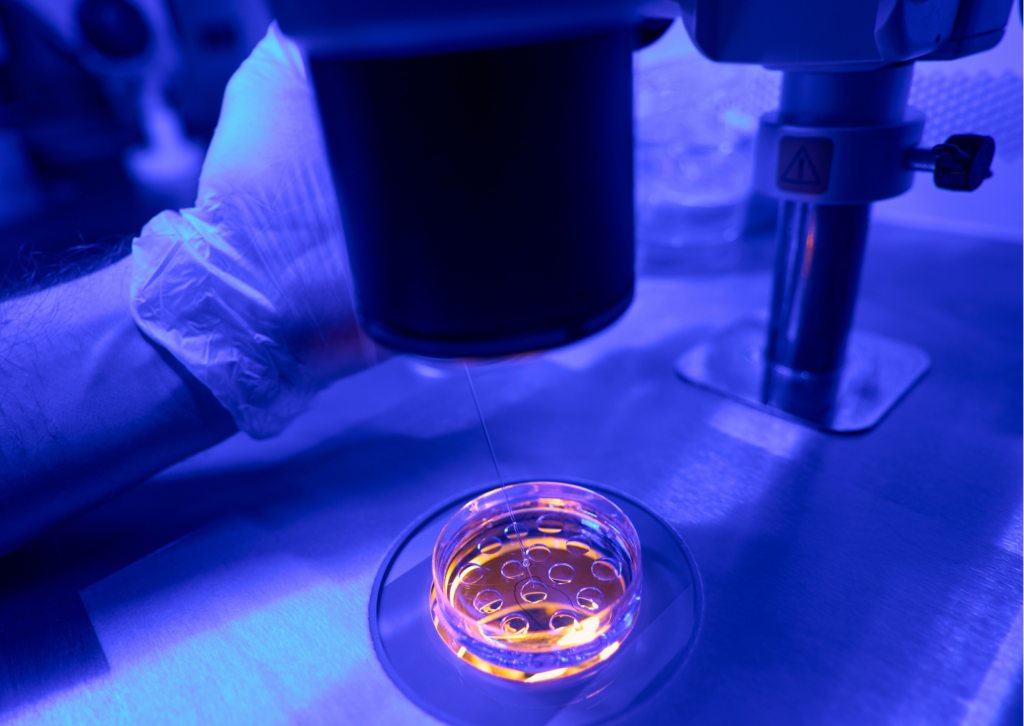IVF in the US: State of the art and beyond

Following on from our review of US IVF success rates we asked one of the clinicians we work regularly with, Dr Gad Lavy from New England Fertility Institute in Connecticut, to give insight into some of the incredible techniques regularly adopted by IVF clinics in the US to maximise chances of success in surrogacy. Here’s what he shared with us:
The US is at the forefront of IVF
In vitro fertilization (IVF) has transformed from a groundbreaking experiment to a routine procedure, offering hope to countless individuals and couples struggling with infertility. As of 2024, the United States remains at the forefront of IVF technology and innovation, continuously improving success rates and expanding possibilities for patients.
Advancements in IVF technology
IVF technology has seen remarkable advancements in recent years. One significant development is the use of preimplantation genetic testing (PGT), which allows for the screening of embryos for genetic abnormalities before implantation. PGT-A (for abnormal number of chromosomes) and PGT-M (for monogenic diseases, or alterations in a single gene) enable the selection of genetically healthy embryos for transfer, increasing the chances of a successful pregnancy and reducing the risk of miscarriage.
Whole genome sequencing (WGS) of embryos is now available, allowing for the identification of genetic conditions such as schizophrenia, heart disease, and diabetes. This comprehensive screening offers a broader insight into the genetic health of embryos and is likely to become the standard for genetic screening in the near future.
Egg and embryo freezing techniques have also improved significantly. Vitrification, which is a rapid freezing process, has enhanced the survival rates of frozen eggs and embryos, making it possible for patients to preserve their fertility with high success rates. The survival rate of thawed embryos now exceeds 95% in leading clinics, contributing to higher live birth rates. Advancements in egg freezing have made it a viable option for women wishing to delay childbirth for personal or medical reasons. Automated AI-controlled egg and embryo storage equipment now ensures optimal storage conditions and reduces the risk of human error.
The use of artificial intelligence (AI) in embryo selection represents another leap forward. AI algorithms analyse images of embryos, assessing their quality and predicting their implantation potential more accurately than traditional methods. This technology reduces human error and enhances the selection process, leading to better outcomes for surrogacy patients

Expanding access and options
The inclusivity of IVF has also expanded. Egg donation and surrogacy have become more accessible, providing options for individuals and couples who cannot conceive using their own gametes. The acceptance and support for LGBTQ+ individuals and single parents in the IVF community has also grown, ensuring that more people can realise their dreams of parenthood.
Innovations such as ovarian tissue freezing and in vitro maturation (IVM) have opened new possibilities for cancer patients and women with polycystic ovary syndrome (PCOS). Ovarian tissue freezing allows for the preservation of fertility before cancer treatment, while IVM enables the maturation of immature eggs in the lab, reducing the risk of ovarian hyperstimulation syndrome (OHSS).
Safety enhancements
Ensuring patient safety is paramount in IVF procedures. One of the most significant advancements in this area is the implementation of automated AI-controlled patient identification systems. These systems minimise the risk of errors, such as incorrect labelling of gametes or embryos, virtually eliminating the possibility of mix-ups. By incorporating biometric identification and real-time tracking, these systems provide an additional layer of security and peace of mind for patients and clinicians alike.
The future of IVF
The future of IVF holds even greater promise. Researchers are exploring gene editing technologies like CRISPR-Cas9 to correct genetic defects in embryos, potentially eliminating hereditary diseases before birth. Although still in the experimental stage, this technology could revolutionise reproductive medicine.
Stem cell research is another exciting frontier. Scientists are investigating the potential of creating gametes from stem cells, which could provide solutions for individuals with infertility due to genetic conditions or age-related decline in fertility. This advancement could extend fertility preservation options and create new avenues for treatment.
IVF in the United States is at the cutting edge of reproductive technology, offering state-of-the-art solutions for infertility. With advancements in genetic screening, cryopreservation, AI and inclusivity, the success rates and accessibility of IVF continue to improve. As research progresses, the future of IVF promises even more innovative approaches, ensuring that the dream of parenthood becomes a reality for more individuals and couples.
Related articles
Information about surrogacy in the USA
Find out more about US surrogacy in our comprehensive US surrogacy knowledge base.
Brilliant Beginnings
US Surrogacy Pathway
Our US Surrogacy Pathway is a trusted service offering tailored professional care throughout your US surrogacy journey.



Recent Comments